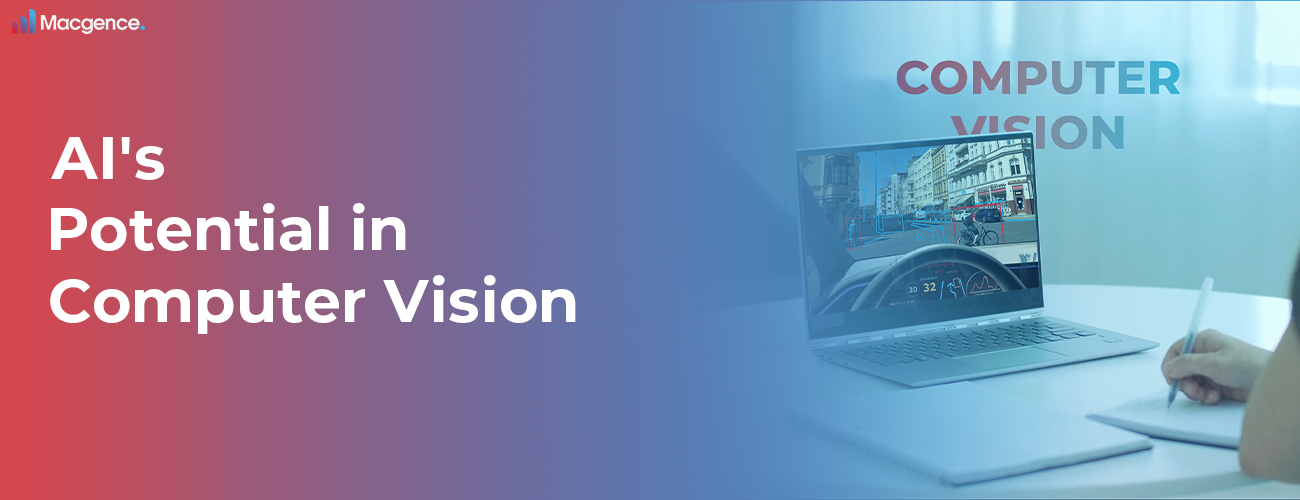Within the rapidly developing field of artificial intelligence (AI), computer vision stands out for its exceptional progress and potential to revolutionize human-technology interaction. Giving robots intelligent eyes would be the equivalent of giving them human-like vision and comprehension of the outside world.
Let’s explore the fascinating field of computer vision, learning about its principles, applications, and amazing effects on various fields.
Understanding Computer Vision:
The main purpose of computer vision is basically to educate different machines on how to perceive and interpret the provided visual data. It’s similar to teaching a friend how to identify objects, shapes, and patterns in pictures or videos. However, we rely on intelligent algorithms and deep learning models rather than using our brains to do the heavy lifting. These algorithms “see” and make smart decisions by identifying patterns in photos and videos.
Several interesting methods and instruments are employed to make computer vision function. Consider them as the fundamental components of computer vision. Image classification is the process of classifying images into various groups. Subsequently, object detection aids computers in locating and recognizing particular objects within an image. Semantic segmentation should also be noticed. It applies different colors to different areas of an image to distinguish between them.
Utilizations of Computer Vision in All Sectors:
Healthcare: Computer vision’s assistance with medical image analysis makes early disease detection for conditions like cancer, tumors, and fractures possible. Improved patient outcomes result from its assistance to medical professionals in making precise diagnoses and treatment plans.
Retail: Computer vision is used in this industry for a number of purposes, such as automated checkout systems that help customers have a more efficient shopping experience. It makes inventory management easier by automatically monitoring stock levels and detecting items that are out of stock. Personalized product recommendations based on consumer preferences and behavior analysis are another way that computer vision improves marketing strategies.
Protection and Monitoring: Facial recognition, threat detection, and monitoring are all made possible by computer vision in protection and monitoring systems. It tracks people of interest, detects suspicious activity, and makes access control in restricted areas easier, improving public safety. Additionally, real-time video feed analysis from computer vision enables proactive reactions to security threats, further improving video surveillance.
Interactive experiences: With its tools for photo and video editing, special effects, as well as visual storytelling, computer vision also makes content creation easier.
Banking and Finance: Fraud detection, document verification, and customer authentication are all done in banking and finance using computer vision. Identity theft and financial fraud are less likely thanks to its ability to facilitate automated verification procedures. Intelligent document processing is facilitated by computer vision, which also automates processes like form recognition in banking operations, invoice processing, and check scanning.
These illustrations highlight the versatility and revolutionary potential of computer vision in influencing the direction of technological advancement and innovation in the future. They also show the wide range of industries in which computer vision is applied.
Challenges in the Path:
Data Privacy and Security: Data security and privacy are crucial because AI computer vision systems rely significantly on enormous volumes of visual data. Ethical questions about gathering, archiving, and using private visual data emphasize the need for solid data security protocols and legal frameworks to protect people’s right to privacy.
Overcoming Technical Limitations: Despite notable progress, algorithmic biases, computational resource requirements, and limited accuracy in complex environments remain obstacles facing AI computer vision. More research and innovation are needed to overcome these technical constraints and create more durable, dependable solutions that work well in various settings.
Moral Considerations: The broad use of AI computer vision raises ethical issues with justice, accountability, and bias. E algorithmic decision-making processes must be transparent and equitable to reduce the possibility of sustaining current biases and inequalities in society. To encourage ethical and responsible use, it is also essential to set precise rules and moral standards for creating and applying AI computer vision systems.
Interoperability and Integration: The smooth incorporation of AI computer vision technologies into current workflows and systems presents logistical difficulties, especially in sectors with intricate infrastructures and outdated systems.
Conclusion:
Computer vision in AI has great potential for a variety of industries. But issues like data privacy and moral considerations need to be addressed. Responsible development and cooperative efforts are necessary to realize its full potential.

